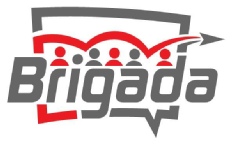If you’re using Gmail or the equivalent (seems like almost everyone has switched), you’re probably good to go. Many vendors (like Gmail) are fairly secure now, if you’re logging on to their server (and you trust their staff). Look for the “padlock” or “https” address in your browser’s URL web address box. We previously recommended Hushmail — and while it’s still a great option, in spite of a few recent interface polishes, Hushmail is looking a bit old-fashioned compared to Gmail. And Gmail seems always to stay ahead on the secure online storage offered for free — remind me again why we’re paying for Hushmail? :-)
For my own purposes, I refuse to switch to a web-based email solution like Gmail as my primary email client because I want to be able to even when I can’t find a source for Internet. I realize I’m probably in the minority these days, but for my life, it still makes sense. If yours is similar, make sure you’re logging on to a secure email server. Check yours and take the necessary action. Or surround your entire computer with a secure “wall” by using a Virtual Private Network (VPN). StrongVPN
and
are both great solutions. StrongVPN seems to have better customer service. Not only will a VPN keep prying eyes from seeing your internet (as it leaves your computer all the way to your VPN-provider’s server), but it will also likewise secure your web-browsing as well. Find out where your VPN is based (for example, Sweden or Vancouver). If a secure route out of your sensitive field is all you need to “get into the clear,” then you’re golden. If you need end-to-end encryption with your home or office, look for a tech that can hook you up with a home-brewed VPN. Be prepared to manage the extra technical needs. As with everything else, sort all this out before you board the plane.










By the way, you can still use Gmail offline just as any other email server. You can pull it into Outlook, use a mobile app for Android or iPhone, or use the Chrome extension Gmail Offline.
+1 on witopia. However, if you really want to be secure, then avoid all free email services, especially Gmail. If you read their EULA it becomes clear that they last claim to own all data that you put on their servers. See also: http://www.sfgate.com/technology/businessinsider/article/GOOGLE-If-You-Use-Gmail-You-Have-No-Legitimate-4730587.php (The only free service that currently offers privacy is Outlook.com.)
If you want good security, then you will have to pay for it.
Gmail Does work offline easily…
I can’t comment on security, as I know nothing of the dynamics. I’m told in my region to assume all email is simply not secure.
We use G-mail and we funnel and manage every email address through Gmail. Our agency, personal emails (Yahoo, and a local Canadian Provider for my home phone and office) all are manged in Gmail seamlessly (at least 8 email addresses.)
Gmail is the only solution i found that works for us.
We love that on 3 laptops, two Android smart phones, one IPad, One IPod, and One Android tablet (Are we junkies or what?) everything is synced all the time, If my wife or I enter an email address on any device, or my wife modifies a document, every device has the updated email address or document. But you have to be online.
That is fine as a smart phone or tablet will let you write emails offline.
What About A Laptop or Desktop Computer OFFLINE????????? A comment on our Web-based email experience on a Laptops.
Only recently did I have trouble with WIFI at the office just south of the Sahara Desert, in French West Africa, and I was not able to do my Gmail offline on the laptop for time. Had to go to my tablet, with a bluetooth keyboard. It worked but was frustrating after a while.
So that got me to thinking How can we manage Gmail OFFLINE….
So went digging….. and wow… the changes in 8 years. I used to use opensource free Mozilla Thunderbird Ancient times ago and found it tedious way back then.
We now Have Mozilla Thunderbird back on our laptops, synced to our Gmail account, google address book, Google Calender, and Tasks. It is all manged in the Email Program. It works seamlessly with Gmail OFFLINE….any changes I make to email, callender, to tasks offline, are synced when the computer has a connection – or the changes form another device are reflect on the laptop now.
You have to add in a few simple extensions, and presto. I had Gmail up and going offline in 20 minutes.
So Gmail does work offline… Looks like Gmail online too, with all my Gmail folders and labels sitting right there on the left.
We have tried many options and GOOGLE with “one account” for many diverse uses, seems to keep rising to the top for us because it’s easy and quick.
I have no idea how Thunderbird and the needed extensions, compromise security… and about Google Privacy and security… Well…. I assume Canadian CISIS, the CIA, and China is reading it all any time they want anyway.
I can link the tutorial pages for get GMAIL working offline if anyone wishes.
My 2 cents.
A security option we used for while was to carry a USB that had all the software we needed and antivirus included. Then on a public internet cafe you would just be using their internet connection through their computer, but all your work was channeled to and from your USB so the local tech guys could not read what we were doing.
A tech guy created this for us, but I have lost connection and am not sure how to set this up myself. But it may be an idea to look into if you need to use many public internet sources.